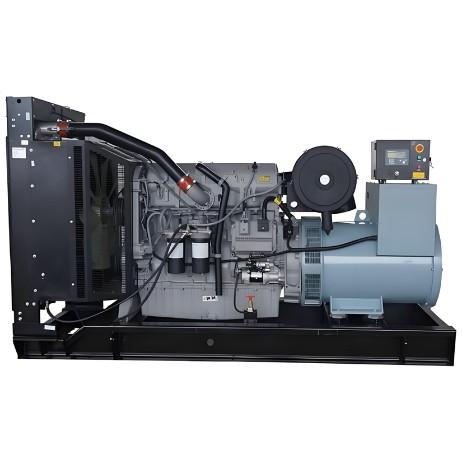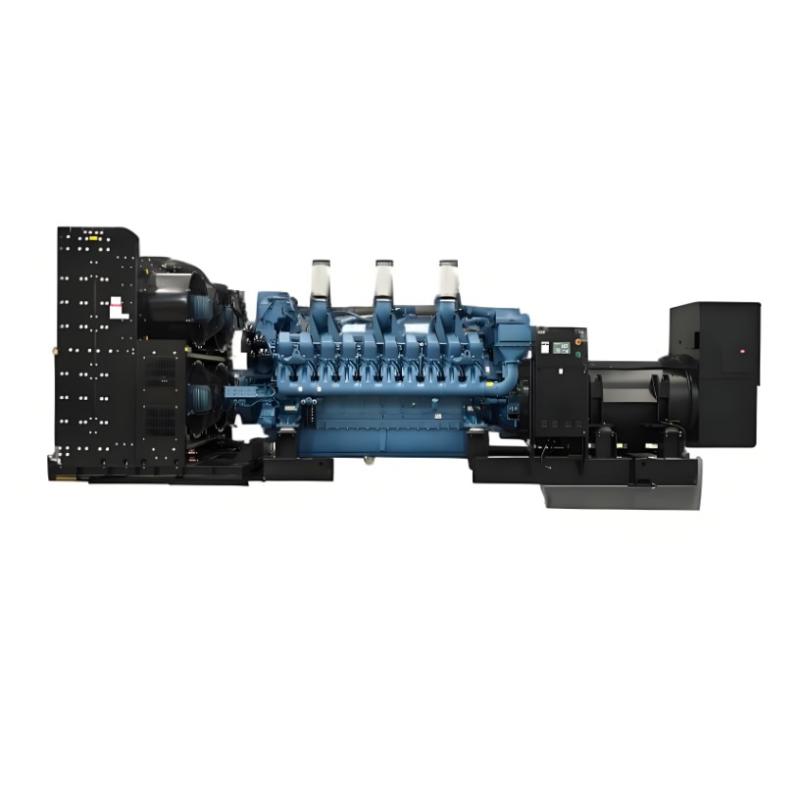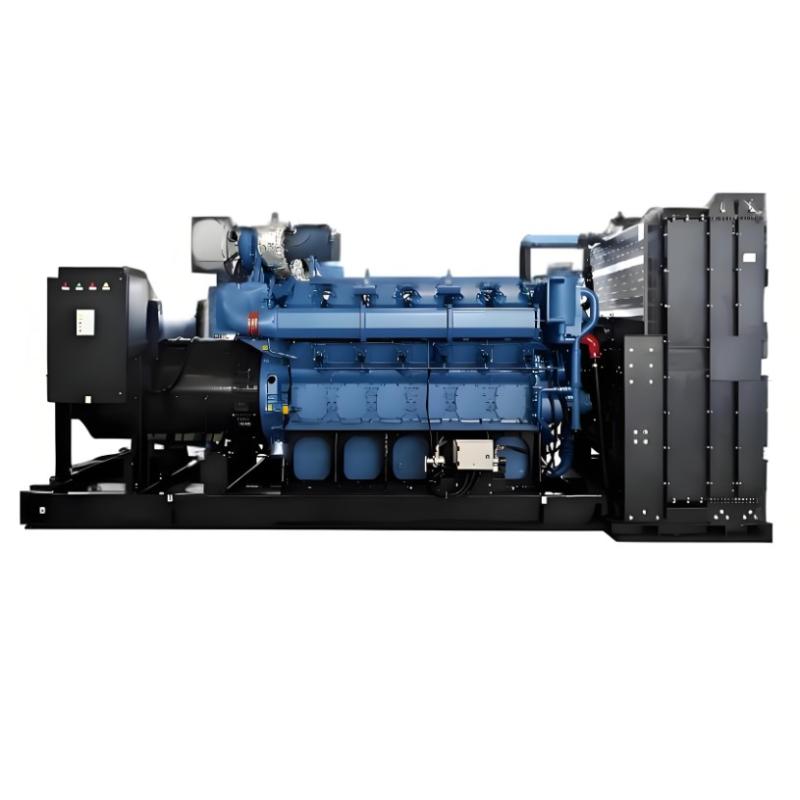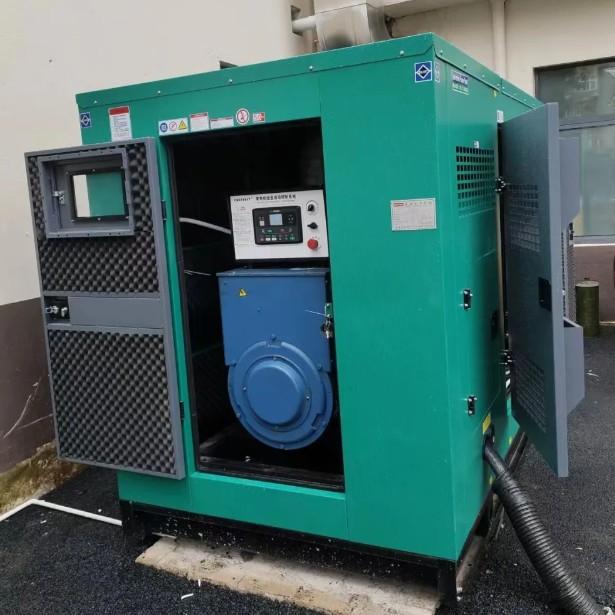Is It Possible to Combine Two Generators to Increase Their Power Output?
Combining two generators to increase the total power output is feasible, but it requires meeting certain conditions and implementing appropriate measures. This practice in power systems is known as parallel operation or paralleling. By operating multiple generators in parallel, they can collectively supply power to larger loads, thereby providing a higher total output. However, parallel operation is not a simple physical connection; it involves complex electrical and control technologies.
1. Basic Principles of Parallel Operation
When two or more generators operate in parallel, they must work synchronously, ensuring that their output voltage, frequency, and phase are perfectly aligned. Otherwise, it can lead to current surges, equipment damage, or system instability. The main objectives of parallel operation are:
Increase Total Output Power: By paralleling multiple generators, a greater amount of power can be supplied to larger loads.
Enhance System Reliability: If one generator fails, the others can continue supplying power, ensuring system continuity.
Optimize Load Distribution: Dynamically adjust the output power of each generator based on actual load demand to prevent overloading any single generator.
2. Conditions for Parallel Operation
To achieve safe and reliable parallel operation, the following conditions must be met:
Same Rated Voltage: The output voltages of the two generators must be identical. For example, if one generator outputs 400V, the other must also output 400V.
Same Rated Frequency: The output frequencies of the two generators must be the same. Typically, AC generators operate at either 50Hz (in China, Europe, etc.) or 60Hz (in the US, etc.). If the frequencies differ, a phase difference will occur between the generators, leading to current surges.
Same Phase Sequence: For three-phase generators, the phase sequence must be consistent. Inconsistent phase sequences can cause unbalanced currents, potentially damaging the generators or load equipment.
Synchronous Operation: The output voltage waveforms of the generators must be synchronized, meaning they reach the same voltage peak at the same time. During synchronization, a synchronizing indicator or automatic synchronizer is typically used to detect and adjust the phase angles of the generators.
Load Sharing: During parallel operation, it is essential to ensure that the load is evenly distributed among the generators. Uneven load distribution can lead to one generator being overloaded while another operates under light load. Modern generator sets often come equipped with automatic load sharing devices that adjust the output power of each generator based on load demand.
3. Methods of Parallel Operation
Parallel operation can be achieved through two primary methods:
Parallel Operation of Identical Generators: This is the simplest and most reliable method. Since the generators have the same electrical parameters and technical specifications, synchronization and load sharing are easier to achieve. Many manufacturers provide generators with built-in parallel operation capabilities, allowing users to connect them according to the manual.
Parallel Operation of Different Generators: While theoretically possible, paralleling different brands or models of generators requires more technical support and equipment. Differences in electrical parameters (such as voltage, frequency, and phase sequence) and control system compatibility can pose challenges. In such cases, external paralleling controllers or synchronizing devices are recommended to ensure proper synchronization and load sharing.
4. Advantages of Parallel Operation
Increased Total Output Power: By paralleling multiple generators, a higher total power output can be achieved, suitable for applications requiring high power, such as large buildings, factories, and data centers.
Enhanced System Redundancy: If one generator fails, the others can continue supplying power, ensuring system continuity. This is particularly important for critical facilities like hospitals, airports, and communication base stations.
Flexible Load Management: Based on actual load demand, the output power of each generator can be dynamically adjusted to avoid overloading or underutilizing any single generator, extending the lifespan of the equipment.
Lower Initial Investment: Purchasing multiple smaller generators and operating them in parallel may be more cost-effective than buying a single large generator. Additionally, smaller generators are easier to maintain and replace.
5. Challenges and Considerations for Parallel Operation
Despite its advantages, parallel operation also presents some challenges and considerations:
Synchronization Difficulty: Ensuring that the voltage, frequency, and phase of two generators are perfectly aligned is a complex process, especially when paralleling different brands or models. Professional synchronization equipment and expertise are required.
Load Sharing: During parallel operation, it is crucial to ensure that the load is evenly distributed among the generators. Uneven load distribution can lead to one generator being overloaded while another operates under light load, affecting system efficiency and safety.
Protection and Control Systems: Parallel-operated generators require robust protection and control systems to prevent issues such as overloading, short circuits, and frequency fluctuations. Additionally, communication and coordination between the generators are necessary to ensure they work together seamlessly.
Maintenance and Servicing: A parallel-operated generator system is more complex than a single generator, requiring more maintenance and servicing. Regular inspections and maintenance of the generators and their control systems are essential to ensure long-term stable operation.
6. Applications of Parallel Operation
Parallel operation is widely used in various fields:
Data Centers: Data centers require high-power uninterruptible power supply (UPS) systems to ensure continuous operation of servers and other critical equipment. By paralleling multiple generators, sufficient backup power can be provided, enhancing system redundancy.
Industrial Production: Large factories and manufacturing enterprises need substantial power supply, especially in industries where power continuity is critical. Paralleled generators can provide backup power during grid failures, ensuring uninterrupted production.
Healthcare Facilities: Hospitals and other medical institutions heavily rely on a stable power supply. Any power outage can endanger patient safety. By paralleling multiple generators, reliable backup power can be provided to ensure the normal operation of medical equipment.
Construction Sites: Construction sites often have significant temporary power needs, and power supply can be unstable. By paralleling multiple small generators, sufficient power can be supplied to the site, enhancing system flexibility.
Emergency Power Systems: In natural disasters or emergencies, emergency power systems are crucial. By paralleling multiple generators, reliable power support can be provided to affected areas, ensuring smooth rescue operations.
Summary
Combining two generators to increase power output is feasible, but it requires strict synchronization conditions, including matching voltage, frequency, phase sequence, and phase angle. Parallel operation can enhance the total output power, system redundancy, and flexibility, making it suitable for various applications that require high power or backup power. However, achieving parallel operation requires professional technology and equipment to ensure proper synchronization and load sharing. When considering a parallel operation solution, it is important to evaluate the specific application requirements and the technical specifications of the generators, while also factoring in maintenance and servicing costs.


























